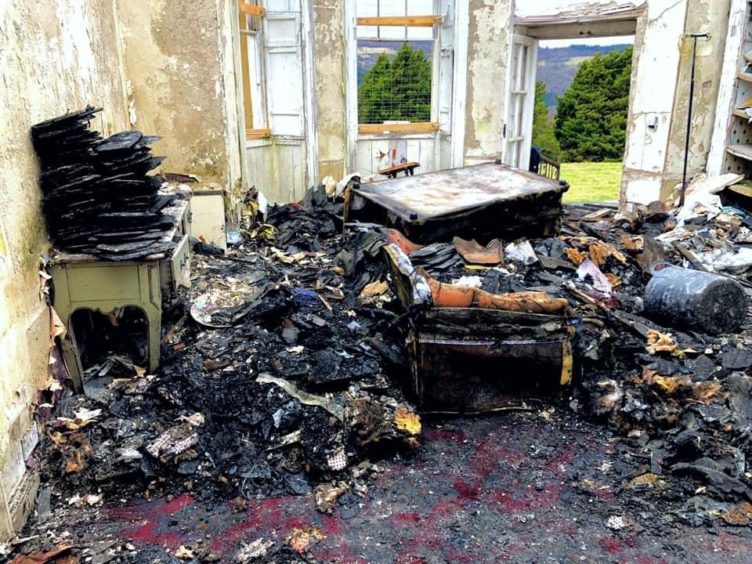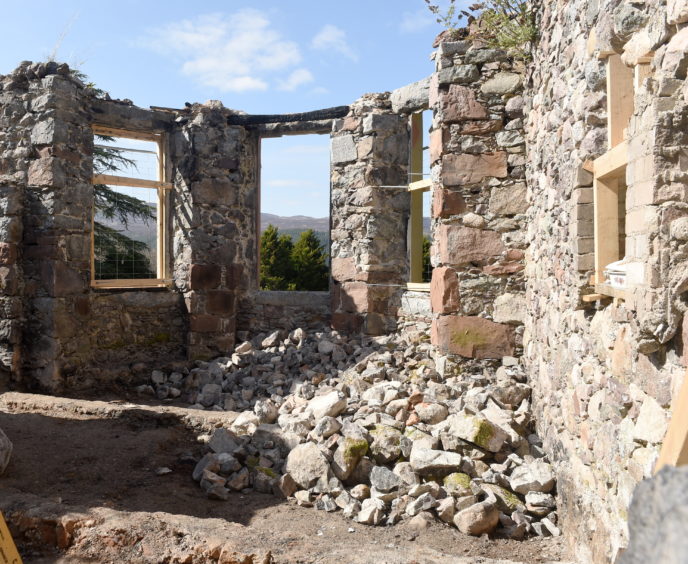A historic Highland landmark devastated by fire could be older than originally thought, according to its owners.
Boleskine House, which overlooks Loch Ness, is being brought back to life – and will this week will reach a significant milestone in its restoration.
Tons of debris have now been cleared from eight of the nine rooms, revealing some historic features and artefacts.
It is hoped the clear-up will be completed this week, paving the way for the next phase of restoration which is now expected to cost as much as £1.2 million.

The Grade B listed building has a colourful past having been owned by the Fraser clan, occultist Aleister Crowley and Led Zeppelin guitarist Jimmy Page.
It has twice been hit by major fires in the last five years and has also been subject to looting and vandalism.
The ruin was bought last July by Keith and Kyra Readdy who set up the Boleskine House Foundation which plans to restore the building and original Georgian gardens.
The couple have just cleared Boleskine’s most famous room, the ‘Oratory’, where Aleister Crowley set up for the Abramelin ritual, which purports to be a method where an individual can make contact with their Holy Guardian Angel.
Mr Readdy said among the findings from the clear-up of the room is a fairly intact wooden floor: “It is still too early to say for sure, but I am researching whether this could be the pine flooring that may have been installed by Crowley, as the instructions laid out for the Abramelin ceremony specifies that the flooring should be pine.”
The work has also revealed old granite structures which may mean an earlier building, dating from 1740-1750, was on site before Archibald Fraser, the house’s first owner who erected a hunting lodge in the 1760s.
Mr Readdy said: “Despite the house’s ‘known’ history, we believe it dates before Archibald Fraser, and may have stood as a military installation during the rebellion period when General Wade’s Road was constructed. This is evident in old military maps from the mid-18th century where a small three-sectioned house with two bayed windows either sides a large middle room was drawn and looks just like the three principal rooms of Boleskine House.”
The last area to be cleared will be the drawing room and Mr Readdy said there is now growing anticipation about the work: “We’ve reached a major point, as it is the first time since the first fire that someone can stand in the rooms of the house and see the structure without debris everywhere.
“You can see the true grandiosity that the architecture of the building, with its tall Georgian windows and large granite construction.”

